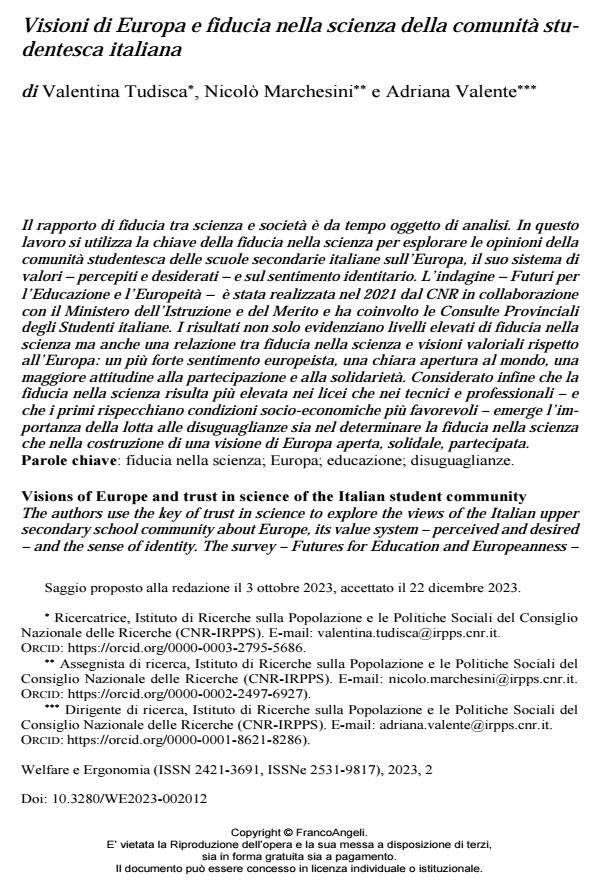Visions of Europe and trust in science of the Italian student community
Journal title WELFARE E ERGONOMIA
Author/s Valentina Tudisca, Nicolò Marchesini, Adriana Valente
Publishing Year 2024 Issue 2023/2
Language Italian Pages 15 P. 173-187 File size 234 KB
DOI 10.3280/WE2023-002012
DOI is like a bar code for intellectual property: to have more infomation
click here
Below, you can see the article first page
If you want to buy this article in PDF format, you can do it, following the instructions to buy download credits

FrancoAngeli is member of Publishers International Linking Association, Inc (PILA), a not-for-profit association which run the CrossRef service enabling links to and from online scholarly content.
The authors use the key of trust in science to explore the views of the Italian upper secondary school community about Europe, its value system – per-ceived and desired – and the sense of identity. The survey – Futures for Edu-cation and Europeanness – was conducted in 2021 by CNR in partnership with the Italian Ministry of Education and involved the Italian Provincial Student Councils. The results highlight not only high levels of trust in science, but also a correlation between trust in science and value visions with reference to Eu-rope: a stronger pro-European sentiment, a clear openness to the world, a wider attitude to participation and solidarity. Finally, given that trust in sci-ence is higher in lyceum than in technical and vocational institutes – and that the first ones reflect better socio-economic conditions – the importance of fighting inequalities emerges to foster both trust in science and the develop-ment of a vision of Europe that tends to openness, solidarity, participation.
Keywords: trust in science; Europe; education; inequalities.
Valentina Tudisca, Nicolò Marchesini, Adriana Valente, Visioni di Europa e fiducia nella scienza della comunità studentesca italiana in "WELFARE E ERGONOMIA" 2/2023, pp 173-187, DOI: 10.3280/WE2023-002012